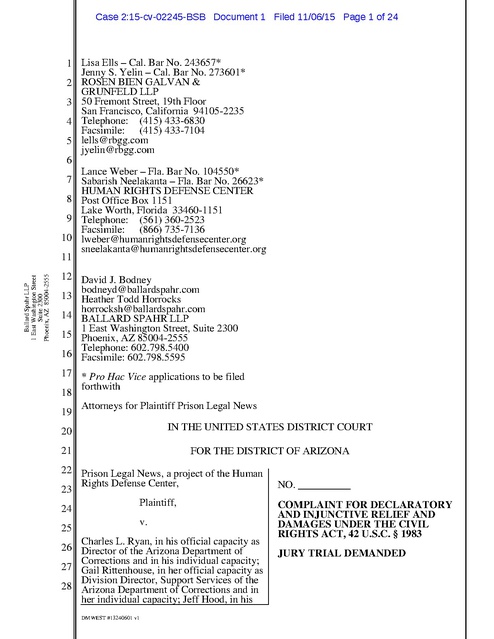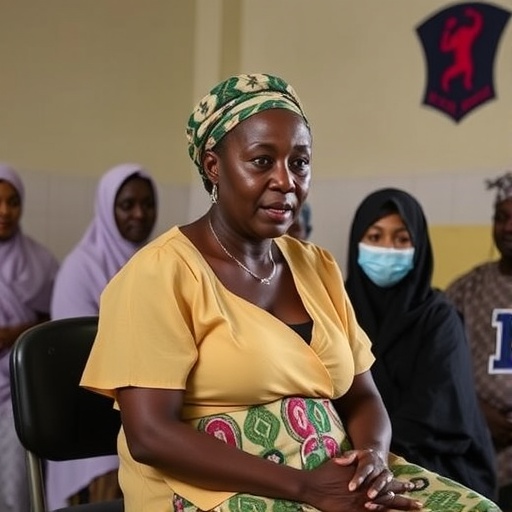Myanmar sentences 12 to life for human trafficking – Yahoo Home

Report on Human Trafficking Convictions in Myanmar and Implications for Sustainable Development Goals
Judicial Response to Human Trafficking and a Commitment to SDG 16
In a recent development concerning the rule of law, military courts in Myanmar have issued life sentences to twelve individuals, including five Chinese nationals, for their roles in multiple human trafficking operations. These convictions represent a judicial action against severe transnational crimes, aligning with the objectives of Sustainable Development Goal 16: Peace, Justice and Strong Institutions. The state-run Myanma Alinn newspaper reported that the offenses encompassed a range of illicit activities, including the online sexual exploitation of victims and the trafficking of women for forced marriages abroad. These actions directly address SDG Target 16.2, which calls for an end to abuse, exploitation, trafficking, and all forms of violence against children and women.
Specific Cases and Violations of SDG 5 and SDG 8
The convictions highlight severe violations of fundamental human rights and represent significant setbacks for several SDGs, particularly SDG 5 (Gender Equality) and SDG 8 (Decent Work and Economic Growth). The cases demonstrate the targeted exploitation of women and the mechanics of modern slavery.
- Sexual Exploitation for Profit: A military court in Yangon sentenced five individuals, including Chinese nationals Lin Te and Wang Xiaofeng, to life imprisonment. They were convicted under Myanmar’s Anti-Trafficking in Persons law for producing and distributing sex videos of three Myanmar couples for financial gain. This act is a direct contravention of SDG Target 5.2, aimed at eliminating all forms of violence against women and girls, including sexual exploitation.
- Trafficking for Forced Marriage: The same court sentenced four individuals, including three Chinese nationals (Yibo, Cao Qiu Quan, and Chen Huan), for planning to traffic two Myanmar women into China following their marriages to two of the convicted men. This practice constitutes a form of modern slavery, undermining SDG Target 8.7, which seeks to eradicate forced labour and human trafficking.
- Sale of Women as Brides: A separate military court issued life sentences to three other individuals for selling one woman into a forced marriage in China and attempting to do the same with another.
- Attempted Trafficking: A woman from the Magway region received a 10-year prison sentence for organizing the trafficking of two women to be sold as brides to Chinese men.
Systemic Vulnerabilities Exacerbated by Conflict
The prevalence of human trafficking in Myanmar is intrinsically linked to the country’s ongoing civil conflict and political instability, which severely hampers progress toward SDG 16. The military takeover in February 2021 has intensified the conflict, leaving millions, especially women and children, highly vulnerable to exploitation. This environment of insecurity erodes the protective systems necessary to achieve SDG 5 and exacerbates conditions of poverty and inequality, which are addressed by SDG 1 (No Poverty) and SDG 10 (Reduced Inequalities).
- A 2018 report by the Johns Hopkins Bloomberg School of Public Health and the Kachin Women’s Association Thailand (KWAT) estimated that approximately 21,000 women and girls from northern Myanmar were forced into marriage in China between 2013 and 2017.
- KWAT’s latest report noted a resurgence in trafficking in 2024, as economic desperation, a key driver of unsafe migration, compels individuals to seek work in China, thereby increasing their exposure to traffickers. This trend directly challenges the principles of SDG 8.
Statistical Overview and Ongoing Challenges to SDG Targets
Official statistics indicate that human trafficking remains a critical challenge, requiring sustained efforts to strengthen institutions and protect vulnerable populations in line with the SDG framework.
- Ministry of Home Affairs Data (2024): Deputy Minister Maj-Gen Aung Kyaw Kyaw reported that authorities addressed 53 cases of human trafficking, forced marriage, and prostitution in 2024, with 34 of these cases linked to China.
- Ministry of Information Data (Jan-June 2024): A total of 80 human trafficking cases were recorded in the first half of the year, including 14 instances of marriage deception involving foreign nationals.
These figures underscore the persistent and organized nature of human trafficking networks operating in and around Myanmar, posing a direct threat to the achievement of SDG 8.7 (ending modern slavery and trafficking) and SDG 16.2 (ending exploitation and violence).
Analysis of Sustainable Development Goals (SDGs) in the Article
SDGs Addressed or Connected to the Issues
The article on human trafficking in Myanmar highlights issues that are directly relevant to several Sustainable Development Goals. The primary SDGs addressed are:
- SDG 5: Gender Equality – The article focuses heavily on the trafficking of women and girls for forced marriages and sexual exploitation, which are extreme forms of gender-based violence.
- SDG 8: Decent Work and Economic Growth – Human trafficking is explicitly mentioned as a form of modern slavery and forced labor, which this goal aims to eradicate.
- SDG 16: Peace, Justice and Strong Institutions – The article discusses the role of conflict in increasing vulnerability, the commission of crimes like trafficking, and the response of the justice system through laws, courts, and convictions.
Specific SDG Targets Identified
Based on the content of the article, the following specific targets can be identified:
-
SDG 5: Gender Equality
- Target 5.2: Eliminate all forms of violence against all women and girls in the public and private spheres, including trafficking and sexual and other types of exploitation.
This target is central to the article, which details the “trafficking of Myanmar women,” the production and “online distribution of sex videos,” and the general exploitation of women and girls. - Target 5.3: Eliminate all harmful practices, such as child, early and forced marriage.
The article repeatedly mentions the trafficking of women for “forced marriages in China” and cases of women being sold “as a bride,” directly addressing this target.
- Target 5.2: Eliminate all forms of violence against all women and girls in the public and private spheres, including trafficking and sexual and other types of exploitation.
-
SDG 8: Decent Work and Economic Growth
- Target 8.7: Take immediate and effective measures to eradicate forced labour, end modern slavery and human trafficking.
The entire article is about “human trafficking cases” in Myanmar, which is a primary component of modern slavery and a core focus of this target.
- Target 8.7: Take immediate and effective measures to eradicate forced labour, end modern slavery and human trafficking.
-
SDG 16: Peace, Justice and Strong Institutions
- Target 16.2: End abuse, exploitation, trafficking and all forms of violence against and torture of children.
The article notes that the conflict in Myanmar has “left millions of women and children vulnerable to exploitation,” and a 2018 report estimated that thousands of “women and girls” were trafficked, directly relating to this target. - Target 16.3: Promote the rule of law at the national and international levels and ensure equal access to justice for all.
The article demonstrates the application of the rule of law by reporting that military courts have “sentenced a dozen individuals…to life imprisonment” and that individuals were found guilty under “Myanmar’s Anti-Trafficking in Persons law.” This shows the justice system’s response to these crimes.
- Target 16.2: End abuse, exploitation, trafficking and all forms of violence against and torture of children.
Indicators for Measuring Progress
The article mentions or implies several quantitative and qualitative indicators that can be used to measure progress towards the identified targets:
- Number of victims of human trafficking: The article provides specific data that serves as an indicator, such as the estimate from a 2018 report that “about 21,000 women and girls from northern Myanmar were forced into marriage in China between 2013 and 2017.”
- Number of human trafficking cases recorded and handled: This is a direct indicator of both the scale of the problem and the authorities’ response. The article states that “authorities had handled 53 cases of human trafficking…in 2024” and that “a total of 80 human trafficking cases…were recorded between January and June this year.”
- Number of perpetrators prosecuted and convicted: This measures the effectiveness of the justice system. The article reports that “a dozen individuals…were sentenced to life imprisonment” and another woman received a “10-year sentence” for trafficking-related crimes.
- Prevalence of trafficking for forced marriage: The article provides specific numbers, such as “34 of which [cases] involved China” and “14 involving marriage deception by foreign nationals,” which can be used to track this specific form of trafficking.
Summary of Findings
| SDGs | Targets | Indicators Identified in the Article |
|---|---|---|
| SDG 5: Gender Equality | 5.2: Eliminate violence against all women and girls, including trafficking and sexual exploitation.
5.3: Eliminate all harmful practices, such as forced marriage. |
– Number of women trafficked for forced marriage (“21,000 women and girls… between 2013 and 2017”). – Number of cases involving sexual exploitation (“producing sex videos”). – Number of cases involving forced marriage (“14 involving marriage deception”). |
| SDG 8: Decent Work and Economic Growth | 8.7: Eradicate forced labour, end modern slavery and human trafficking. | – Total number of human trafficking cases handled (“53 cases… in 2024”). – Total number of human trafficking cases recorded (“80 human trafficking cases… between January and June”). |
| SDG 16: Peace, Justice and Strong Institutions | 16.2: End abuse, exploitation, and trafficking of children.
16.3: Promote the rule of law and ensure equal access to justice. |
– Number of perpetrators convicted for human trafficking (“a dozen individuals… sentenced to life imprisonment”). – Application of national laws (“found guilty under Myanmar’s Anti-Trafficking in Persons law”). – Number of victims including girls (“21,000 women and girls”). |
Source: ca.news.yahoo.com

What is Your Reaction?
 Like
0
Like
0
 Dislike
0
Dislike
0
 Love
0
Love
0
 Funny
0
Funny
0
 Angry
0
Angry
0
 Sad
0
Sad
0
 Wow
0
Wow
0



























;Resize=805#)



















































